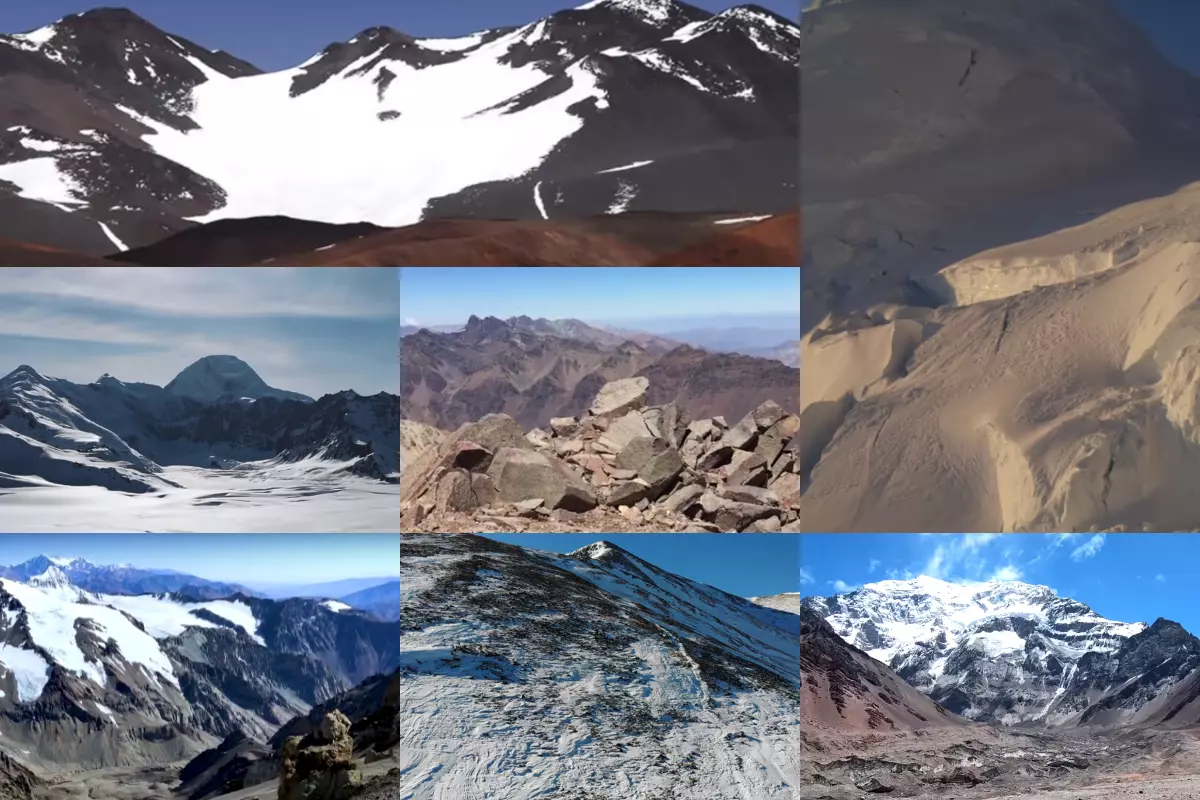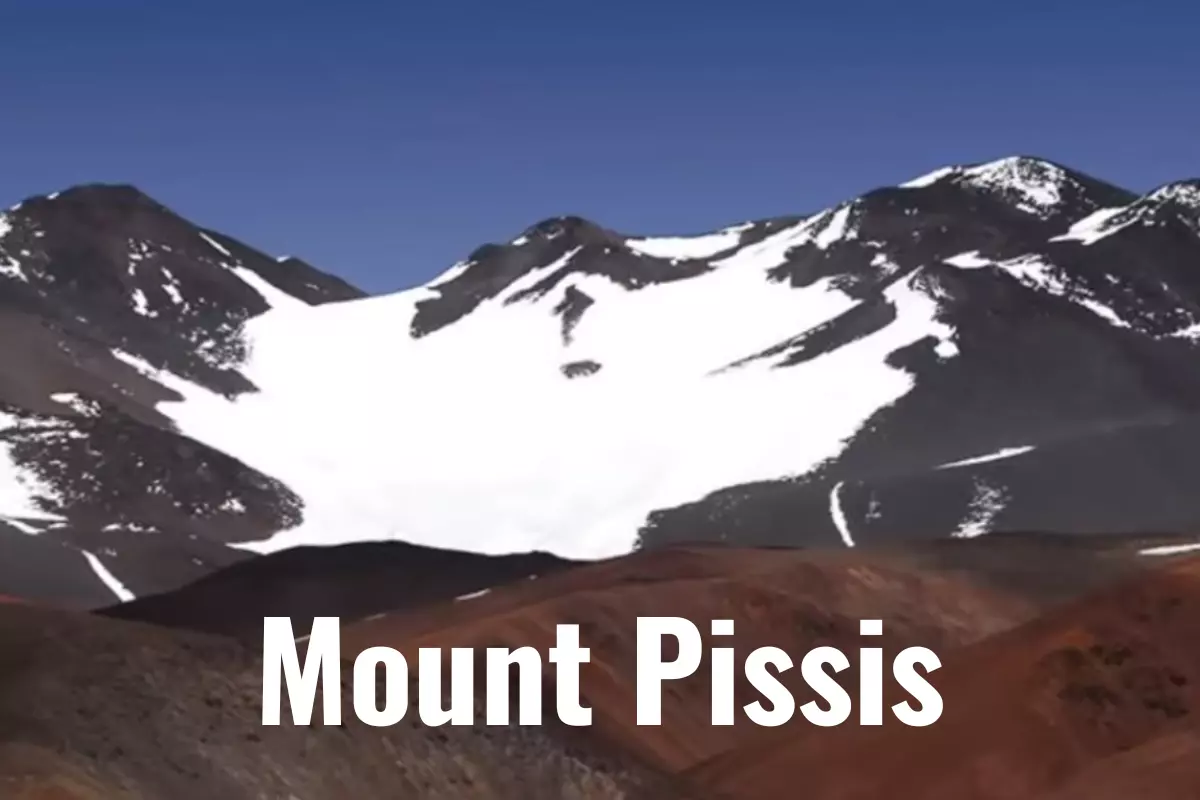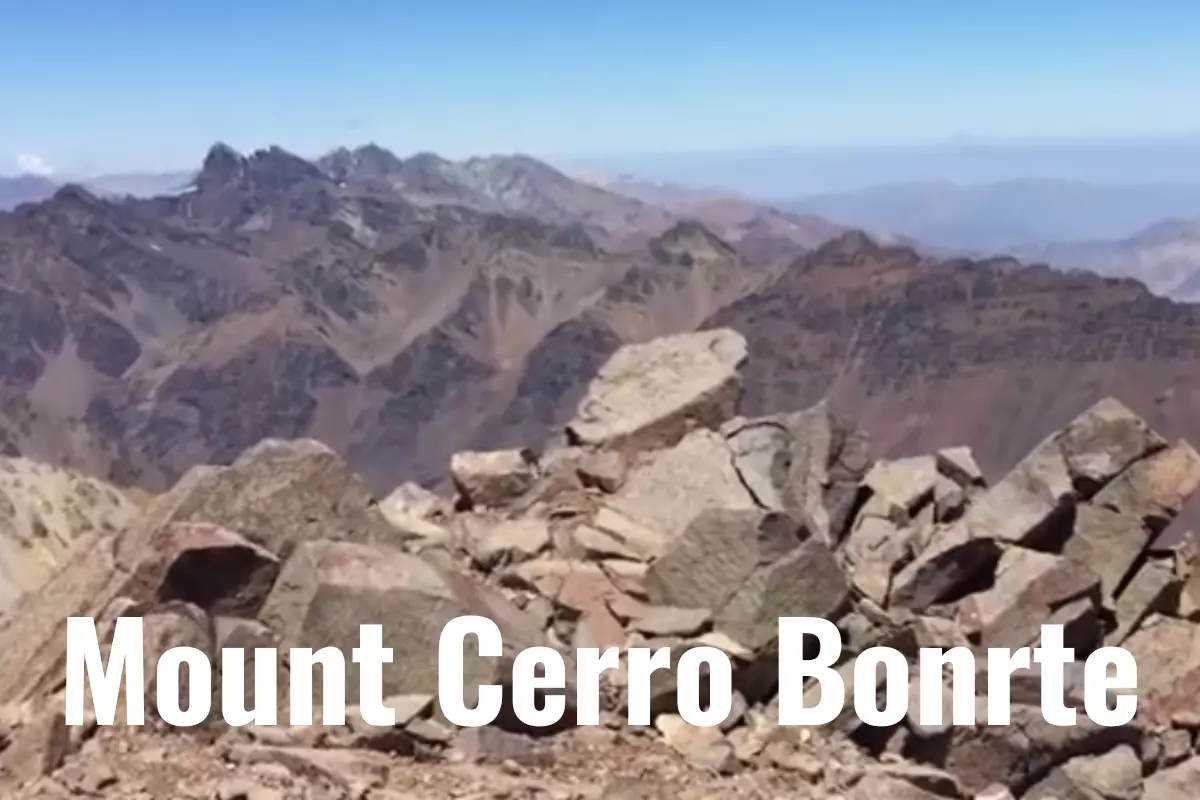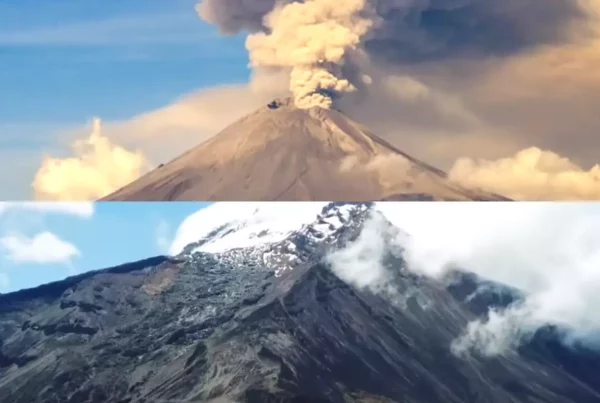Introduction
Tall mountains can be found in South America inside the vast Andes mountain range. The tallest one is Aconcagua in Argentina, and it’s super high at 6,961 meters and is is at the top 1 ranking in the tallest mountains in South America list. The second tallest is Ojos del Salado, which is in Argentina and Chile and is also the highest volcano on Earth.
These mountains are unique because they’re made from volcanoes and have fantastic nature, like rainforests and glaciers. People have been climbing them for a long time. Aconcagua has the record for being the tallest, but before that, indigenous people probably reached the top.
What Is The Tallest Mountain In South America?
The tallest mountain in South America is called Aconcagua. It’s super-duper tall, standing at a whopping 6,961 meters (that’s 22,838 feet!) above the ground. You can spot this giant in Argentina. People who love climbing big mountains admire Aconcagua because it’s a massive adventure waiting to happen.
- Mountain: Aconcagua
- Location: Mendoza Province
- Argentina Height: 6,961 meters (22,838 feet)
- First Ascent: The first recorded ascent was made by a British expedition led by Edward FitzGerald in 1897.
Top 5 Tallest Mountains In South America
1. Argentina/Aconcagua
| Name | Aconcagua |
| Height | 6,961 meters (22,838 feet) |
| Location | Mendoza Province, Argentina |
| First Ascent | 1879, by Matthias Zurbriggen |
Aconcagua, South America’s highest peak at 6,961 meters (22,838 feet), resides in Argentina’s Mendoza Province and was first climbed in 1879 by Matthias Zurbriggen. This towering mountain stands as the highest in the Americas, outside of Asia, and in the Southern Hemisphere. While it’s part of the Andes, the ascent is relatively non-technical, often dubbed the world’s highest non-technical climb.
However, it demands exceptional fitness, altitude adaptation, and cold endurance. Casualties occur due to underestimating its challenges. At the summit, atmospheric pressure is just 40% of sea level. Although it has volcanic origins, Aconcagua is not a live volcano..
2. Ojos del Salado
| Name | Ojos del Salado |
| Height | 6,893 meters (22,595 feet) |
| Location | Catamarca Province, Argentina Copiapo Province, Atacama Region, Chile |
| First Ascent | 1937, by Jan Alfred Szczepański and Justyn Wojsznis |
Ojos del Salado, standing at 6,893 meters (22,595 feet), straddles the border between Catamarca Province in Argentina and Copiapo Province in Chile. In 1937, Jan Alfred Szczepański and Justyn Wojsznis recorded the first climb. It’s a unique mountain, the highest in Chile and the second tallest in South America, claiming the world’s highest volcano title. Its appearance is distinctive, with a grey, shaded complexion.
Although not entirely extinct, the volcano occasionally shows minor activity, emitting the scent of sulfur. Climbers typically approach from the Argentine side, facing bureaucratic considerations. The ascent is straightforward, with a UIAA II climb near the summit, but the winds can be harsh in this region.
You can also read the Top 10 tallest man in the world.
3. Mount Pissis
| Name | Mount Pissis |
| Height | 6,793 meters (22,287 feet) |
| Location | La Rioja and Catamarca Provinces, Argentina |
| First Ascent | 1937, by Stefan Osiecki and Jan Alfred Szczepański |
Mount Pissis, standing at 6,793 meters (22,287 feet), spans the La Rioja and Catamarca Provinces in Argentina. Stefan Osiecki and Jan Alfred Szczepański recorded the first climb in 1937. This mountain pays tribute to the French geologist Pedro José Amadeo Pissis, known for his influential cartographic work in 19th-century Chile. Despite being officially recognized as South America’s third tallest peak, its exact height sparked debate.
An Argentinian expedition in 1994 suggested it was 6,882 meters high, potentially surpassing Ojos del Salado. However, later technology and surveys by Austrian, Chilean, Argentinian, and European teams have confirmed its elevation at 6,793 meters.
4. Huascaran
| Name | Huascarán |
| Height | 6,768 meters (22,205 feet) |
| Location | Yungay Province, Peru |
| First Ascent | 1908, led by Annie Smith |
Huascaran, Nevado Huascarán or Mataraju, stands at 6,768 meters (22,205 feet) in Peru’s Yungay Province. Annie Smith Peck led the first recorded ascent in 1908, followed by a German-Austrian team’s summit of Huascarán Sur in 1932. It’s Peru’s highest peak and is the tallest in the northern Andes and within the world’s Tropics. The name “Mataraju,” given by the local indigenous people, means ‘twin snow peaks,’ perfectly describing this mountain.
Tragically in 1970, an earthquake caused a massive collapse on its north side. It resulted in a catastrophic debris avalanche that buried Yungay and neighboring towns, claiming around 30,000 lives, marking it as history’s deadliest glacier-related disaster.
5. Cerro Bonrte
| Name | Cerro Bonrto |
| Height | 6,759 meters (22,175 feet) |
| Location | La Rioja Province, Argentina |
| First Ascent | 1913, by Walther Penck |
Standing at 6,759 meters (22,175 feet) in Argentina’s La Rioja Province, this massive mountain, first climbed by Walther Penck in 1913, is not only the fifth tallest in South America but also one of the world’s largest in terms of its circumference. Climbing is a grand adventure that takes around two weeks, deep within the remote Andes, far from city life.
The journey typically involves stays at refuges like the Veladero Refuge at 4,400 meters and base camp at 4,600 meters. Climbers establish camps one and two before summiting and descending to Vinchina after reaching the top.
You can also read about How tall is Lil Baby?
Effects Of The Tallest Mountains In South America
Good Effects
Bad Effects
- Tourism and Adventure: Boosts local economies and businesses through tourism and adventure sports.
- Research Opportunities: Provides valuable data for high-altitude research in climate change and biodiversity.
- Cultural Significance: Preserves and raises awareness of the cultural importance of these mountains to indigenous communities.
- Outdoor Recreation: Promotes physical fitness and an appreciation for nature through activities like trekking and mountaineering.
- Environmental Impact: Tourism can lead to environmental degradation, pollution, and habitat disturbance in fragile alpine ecosystems.
- Safety Risks: Climbing dangers result in accidents and strain on local search and rescue resources.
- Resource Exploitation: Resource extraction activities near these mountains can harm ecosystems and water sources.
- Cultural Erosion: Rapid tourism development may disrupt traditional lifestyles and erode indigenous cultural heritage.
Good Effects
- Tourism and Adventure: Boosts local economies and businesses through tourism and adventure sports.
- Research Opportunities: Provides valuable data for high-altitude research in climate change and biodiversity.
- Cultural Significance: Preserves and raises awareness of the cultural importance of these mountains to indigenous communities.
- Outdoor Recreation: Promotes physical fitness and an appreciation for nature through activities like trekking and mountaineering.
Bad Effects
- Environmental Impact: Tourism can lead to environmental degradation, pollution, and habitat disturbance in fragile alpine ecosystems.
- Safety Risks: Climbing dangers result in accidents and strain on local search and rescue resources.
- Resource Exploitation: Resource extraction activities near these mountains can harm ecosystems and water sources.
- Cultural Erosion: Rapid tourism development may disrupt traditional lifestyles and erode indigenous cultural heritage.
Conclusion
In summary, South America’s tallest mountains, like Aconcagua and Huascarán, bring economic benefits through tourism and research opportunities. They also hold cultural significance and promote outdoor activities.
However, they can harm the environment, pose safety risks, lead to resource exploitation, and erode indigenous cultures. For their sustainable development, a balance between these beneficial and negative effects is essential. This ensures we can continue to enjoy these natural wonders while preserving the environment and cultural heritage for future generations.
If you want read more about Tallest Buildings in Chicago / Tallest Bodybuilder and many more articles kindly click the link.
FAQs
Are all the tallest mountains in South America volcanoes?
No, not all of the tallest mountains in South America are volcanoes. While some, like Ojos del Salado, are indeed volcanoes, others, like Aconcagua and Mount Pissis, are not of volcanic origin. They are primarily formed through tectonic processes.
What is the highest mountain in South America?
The highest mountain in South America is Aconcagua, which stands at 6,961 meters (22,838 feet) and is located in the Mendoza Province of Argentina.














